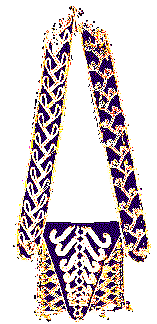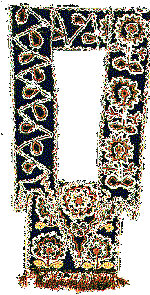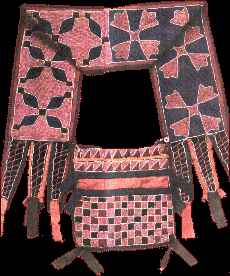Southeastern, Cherokee, Lenni Lenape -- Pre-1840
 |
Though bandolier bags are mainly associated with Anishinaabe people, and especially with Midewiwin dances, a few early ones ones were found among the southeast Woodland tribes. Peabody Museum identifies this one -- which is made of trade wool broadcloth and glass beads -- only as made by a southeastern tribe, prior to the time of Removal -- the 1820-1840 period. They call it a doctor's bag. |
|
| Cherokee women made bandolier bags, which women wore (men usually wor Ojibwe bandoliers). This one was made sometime prior to the Trail of Tears death marches removals (May 1838 - March 1839) of Cherokees from the southeast to Oklahoma. It may have been looted during the rmovals. It is presently in the National Museum of the American Indian. |
 |
|
|---|
 |
This Lenni Lenape (Delaware) bag was made for a woman sometime before the removals of 1840. A student brought it with her to Carlisle Indian residential school and gave it to Martha Wheeler, one of her teachers, in 1880. Because of the rarity of the bag -- the only one known of this tribe -- it sold at a Sotheby's auction for $28,000 in 1979. Its present whereabouts is unknown. |
BANDOLIER Start Page
 CONTINUE
CONTINUE
Text and graphics copyright 1995, 1996.
CREDITS: Southeastrn Tribe doctor's bag: Peabody Musum Gifts of the spirit exhibition. Cherokee Bag: National Musum of the American Indian, reprinted in 500 Nations. Delaware bag: from an ad for a 1979 Sotheby's auction, in a 1979 issue of American Indian Art.
Last Updated: Saturday, August 24, 1996 - 7:33:15 AM



